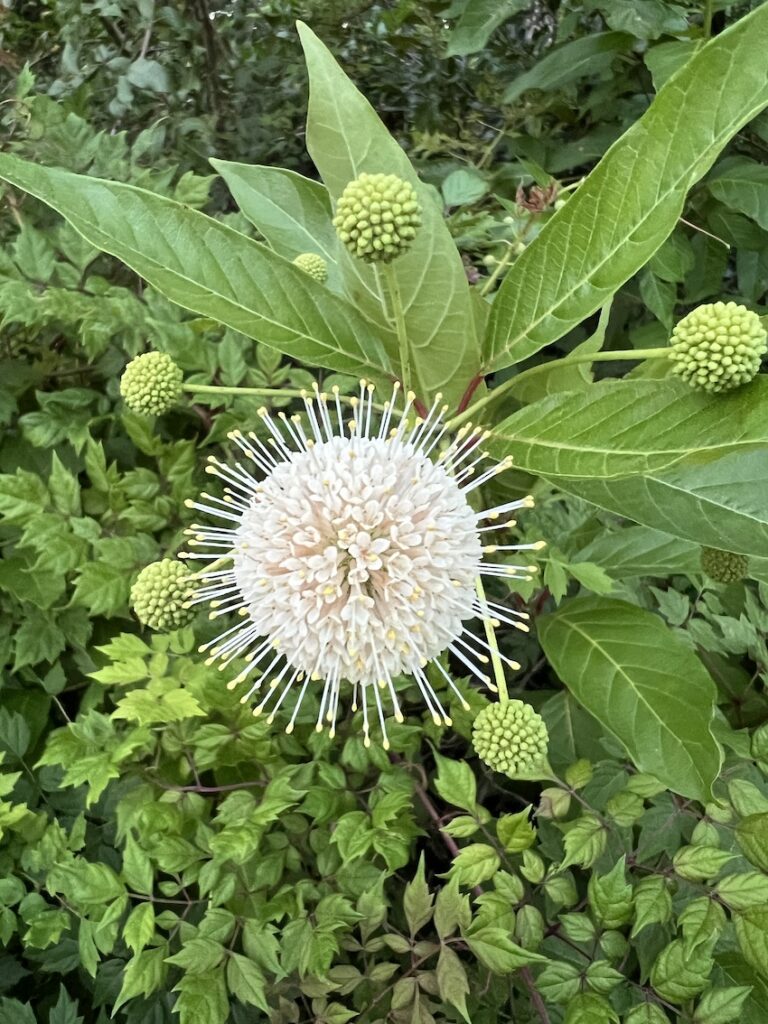Cephalanthus occidentalis L., cotton bud (Common Buttonbush, Buttonbush, Button Willow, Honey bells, Honeyballs), is a perennial, deciduous shrub, adapted to moist soils; melliferous plant, from the Naucleeae tribe of the Rubiaceae family, the same family as the coffee tree, and grows in North America, from Canada to Mexico. C. glabratus, very similar, is found mainly in South America, particularly in Brazil, Paraguay and Argentina (Romero et al., 2021).
Cottonbutton is best adapted to coasts and marshes with saturated soil and full sun; tolerates water depths of up to 90 cm. Flowering is poor in shade or dry soils.
The inflorescences of both species, C. occidentalis and C. glabratus, are similar in shape and color, consisting of small white or cream flowers grouped in spherical heads. However, there may be some subtle differences in flower arrangement or inflorescence density between the two species. The fruit is a nut.
Cotton bud is valued for its ecological importance, providing habitat and food for a variety of wildlife, including birds (hummingbirds…), insects (bees…) and fish. Furthermore, some indigenous and traditional communities use parts of this plant for medicinal purposes or for the production of natural dyes and dyes. However, the poisonous foliage of this species is unpleasant to livestock. The bitter bark has been used in home remedies, but its medicinal value is dubious (Lady Bird Johnson Wildflower Centerm 2024).
WARNING: Cotton bud contains cephalatin, a poisonous substance that induces vomiting, paralysis and convulsions if ingested (USDA, 2002).
Cottonbud plant (Cephalanthus occidentalis L.), 28°02’31.5″N 82°34’59.0″W, Westchase, Tampa, FL, USA, 30Apr2024.
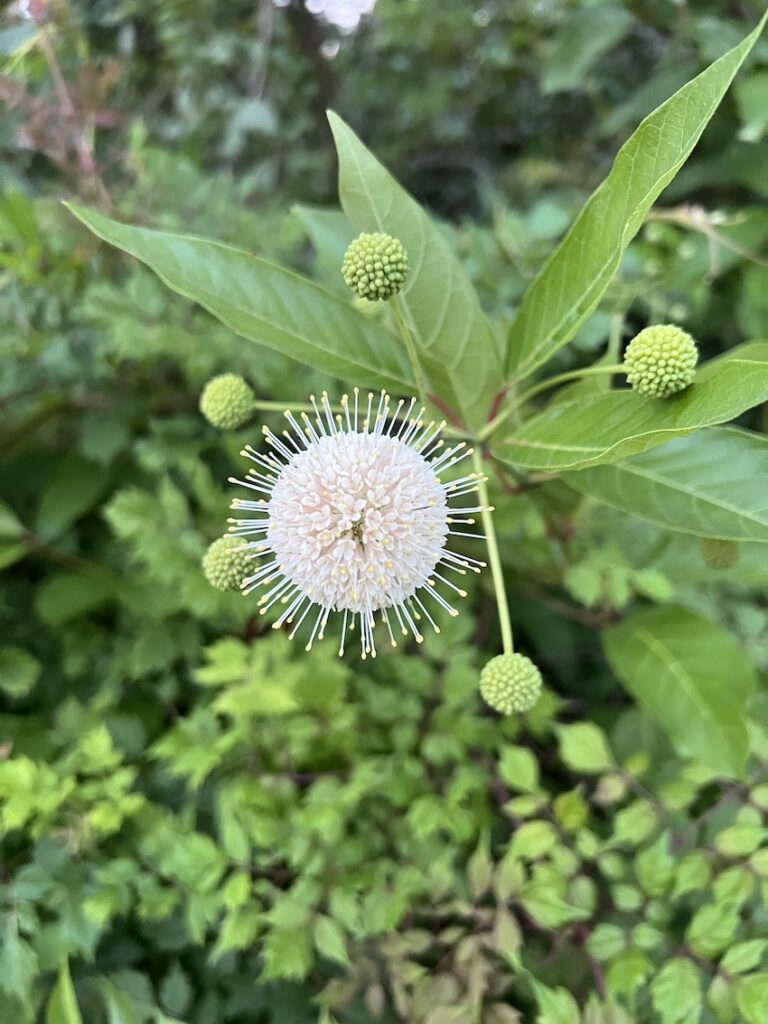
Cottonbud plant (Cephalanthus occidentalis L.), 28°02’31.5″N 82°34’59.0″W, Westchase, Tampa, FL, USA, 30Apr2024. Spherical pincushion-like flowers composed of dense clusters of tiny white tubular flowers. The fragrant flowers are attractive to a wide variety of pollinators, including butterflies.
Round inflorescences 2 to 2.5 cm in diameter, with 100 to 200 flowers. The inflorescences are single at the ends of the stems, up to 10 centimeters long at the ends of the branches and appearing in the upper axils of the leaves. The flowers are white, trumpet-shaped, about 2 cm long and have 4 slightly spreading lobes, sometimes 5. Protruding from the tube is a long, straight, white style surrounded by 4 short stamens, giving the inflorescence a pincushion appearance. The calyx that surrounds the base of a flower is light green, has 4 lobes and is much shorter than the floral tube.
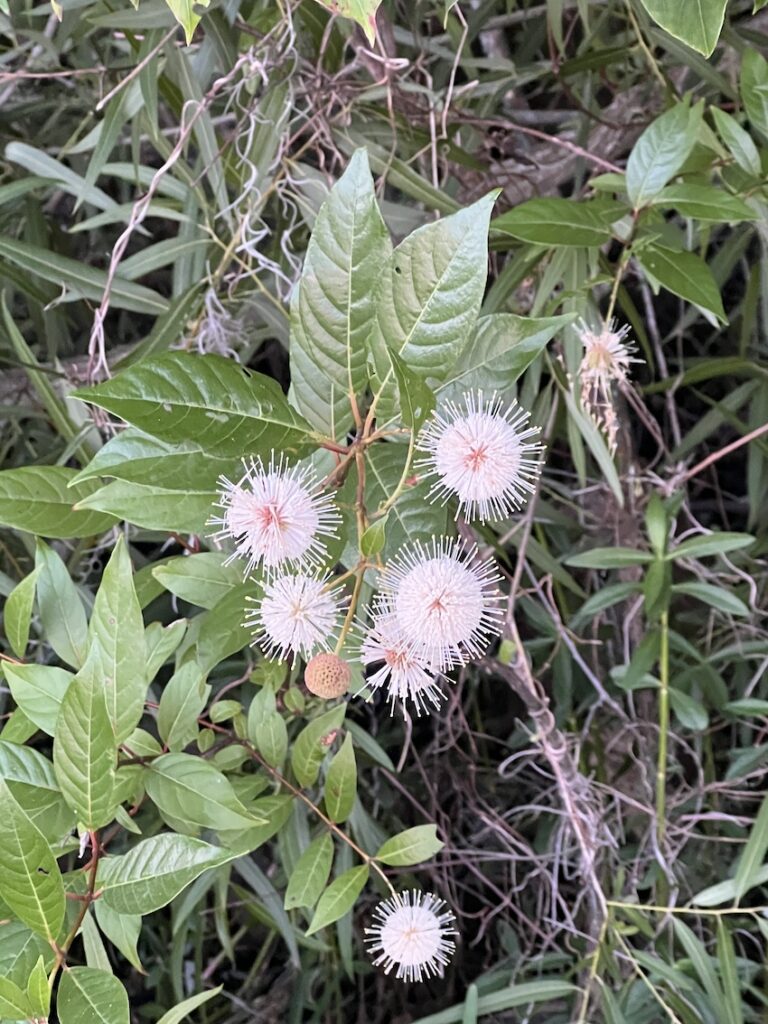
Cottonbud plant (Cephalanthus occidentalis L.), 28°02’31.5″N 82°34’59.0″W, Westchase, Tampa, FL, USA, 30Apr2024.
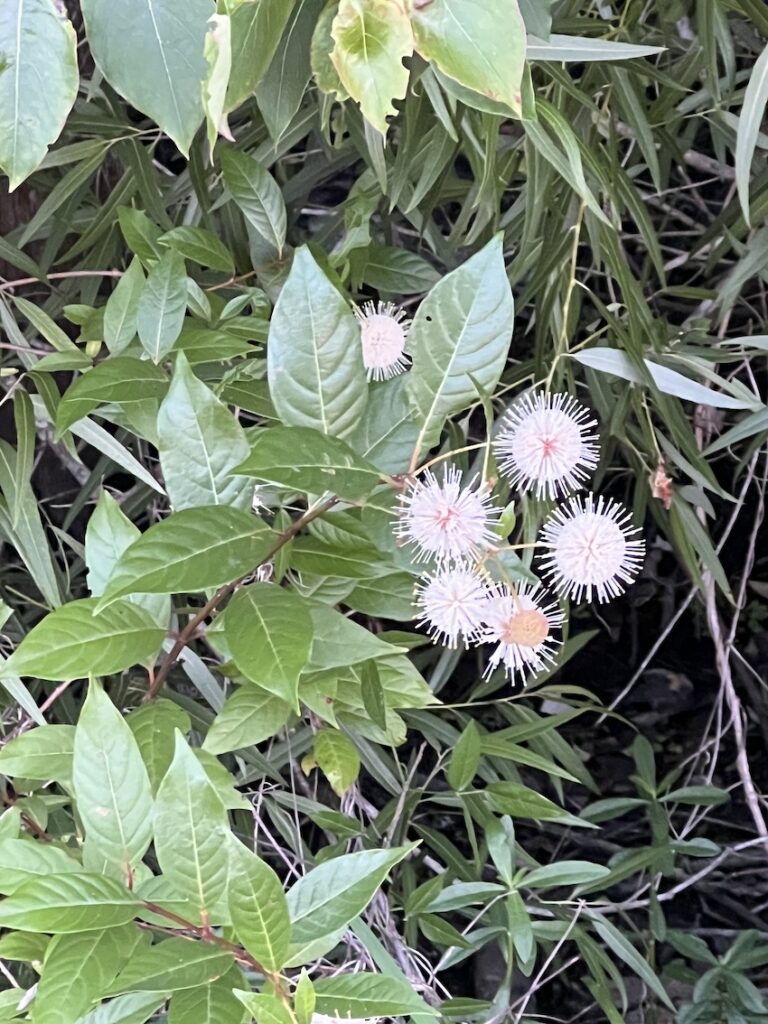
Cottonbud plant (Cephalanthus occidentalis L.), 28°02’31.5″N 82°34’59.0″W, Westchase, Tampa, FL, USA, 30Apr2024.
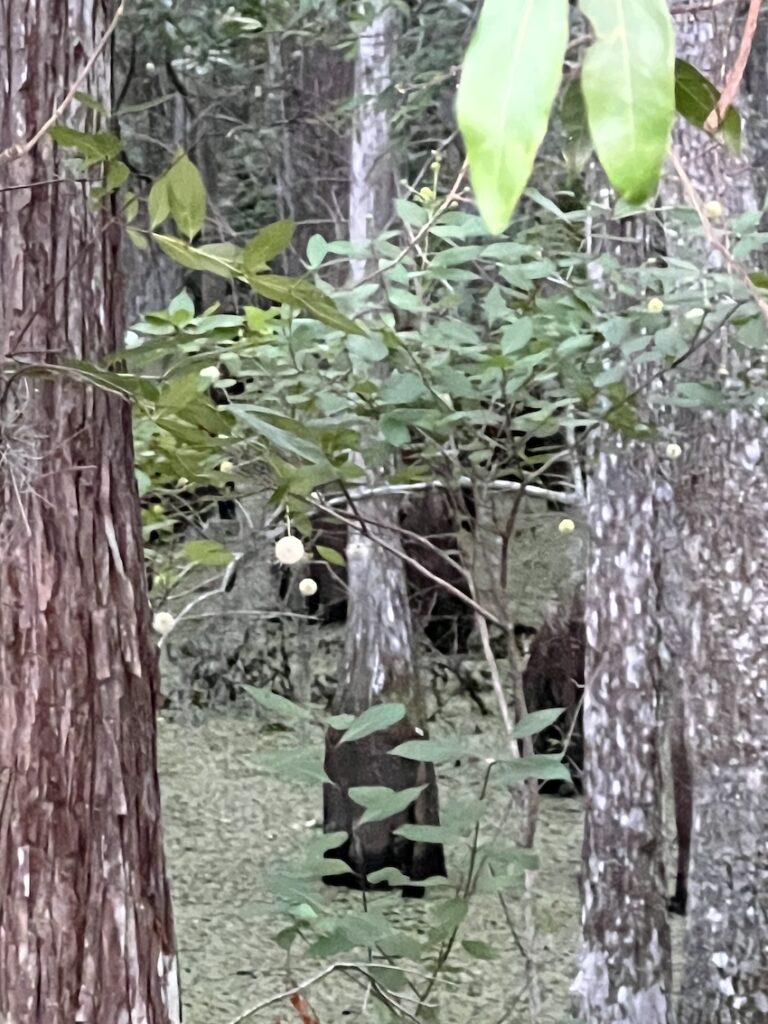
Cottonbud plant (Cephalanthus occidentalis L.) in a swamp, surrounded by other trees, 28°02’33.5″N 82°34’58.9″W, Westchase, Tampa, FL, USA, 30Apr2024.
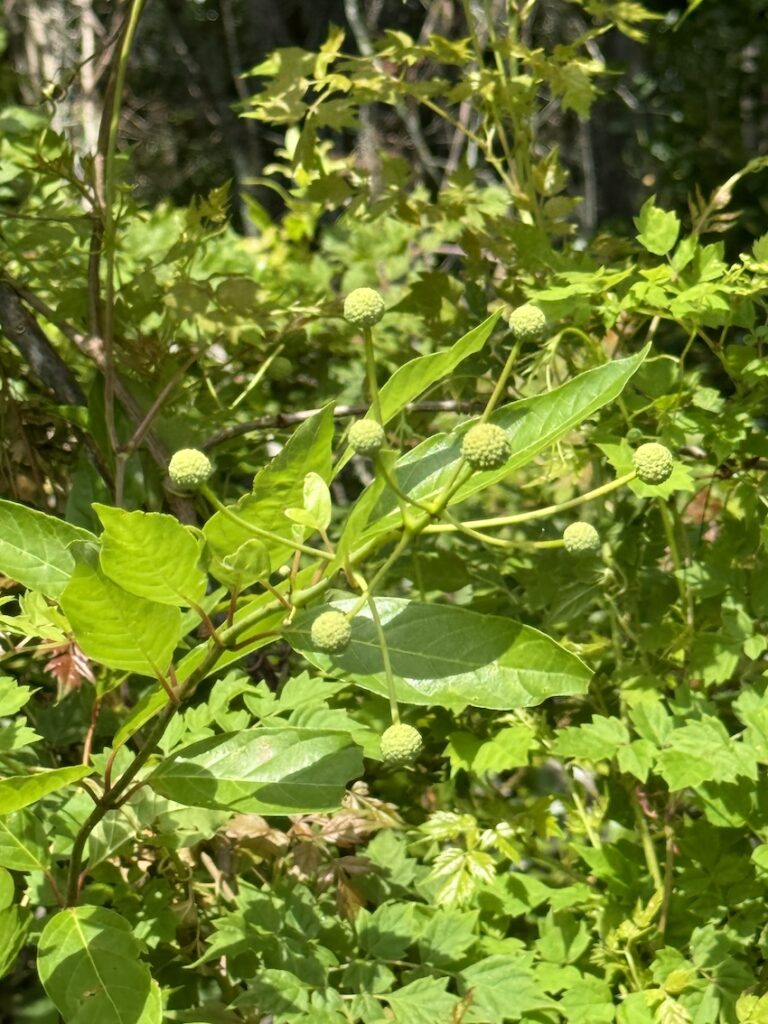
Young inflorescences of cotton bud (Cephalanthus occidentalis L.), 28°02’33.5″N 82°34’58.9″W, Westchase, Tampa, FL, USA, 05May2024.
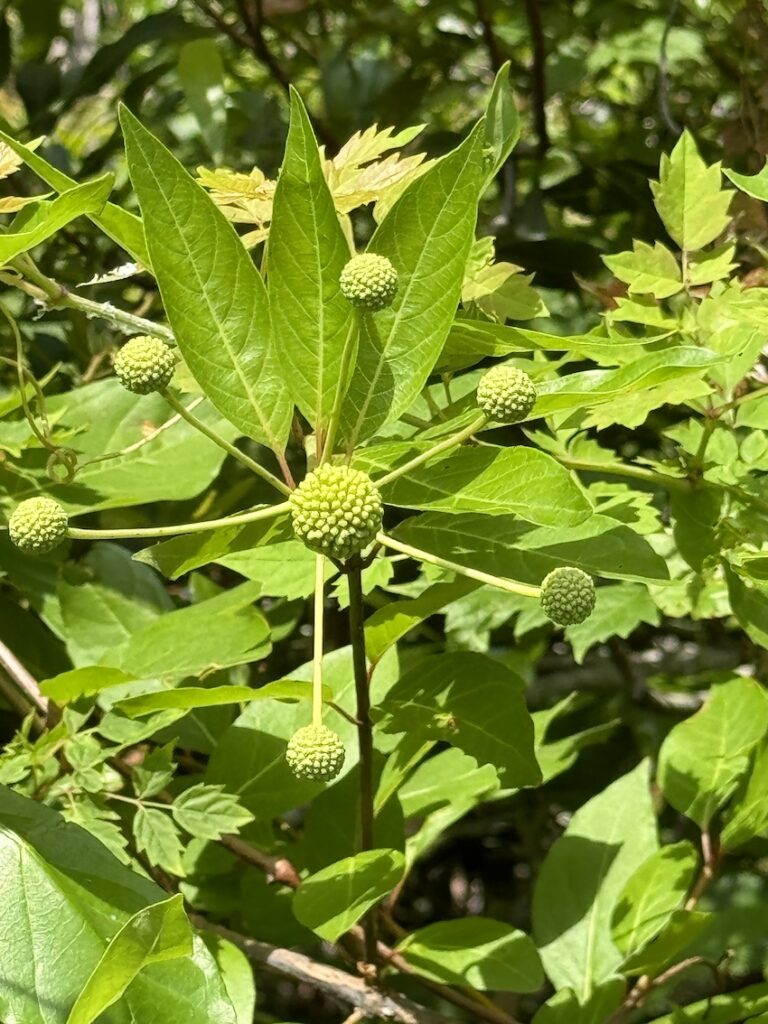
Young inflorescences of cotton bud (Cephalanthus occidentalis L.), 28°02’33.5″N 82°34’58.9″W, Westchase, Tampa, FL, USA, 05May2024.
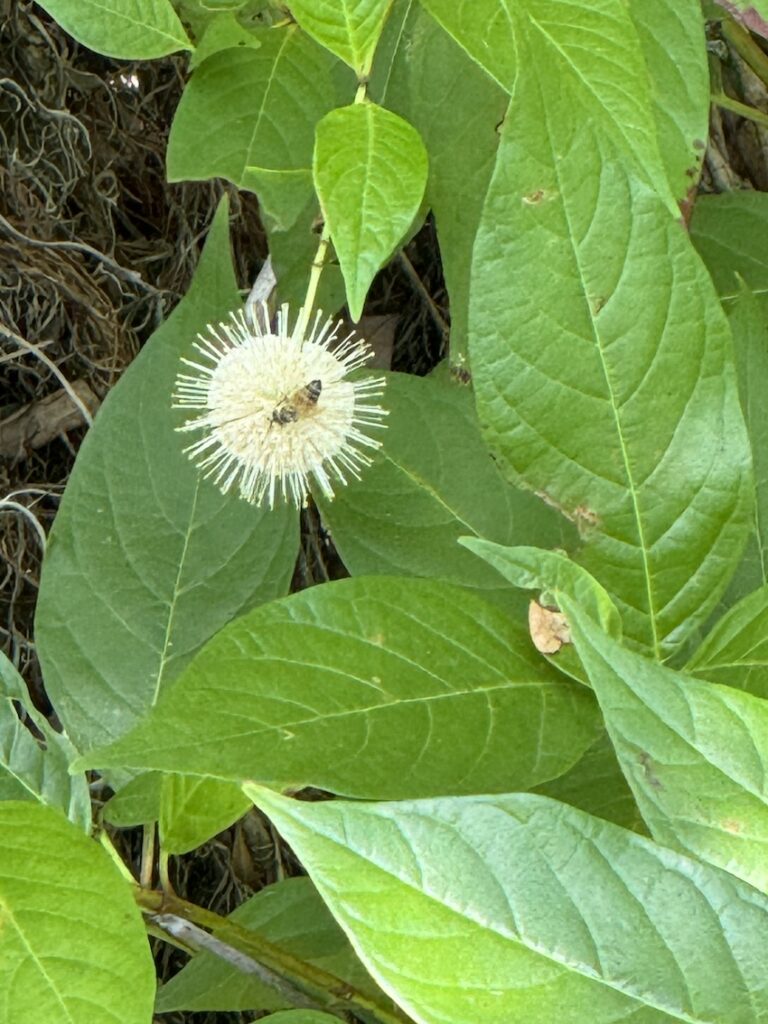
Inflorescence of cotton bud (Cephalanthus occidentalis L.), 28°02’33.5″N 82°34’58.9″W, Westchase, Tampa, FL, USA, 05 May 2024, visited by a bee.
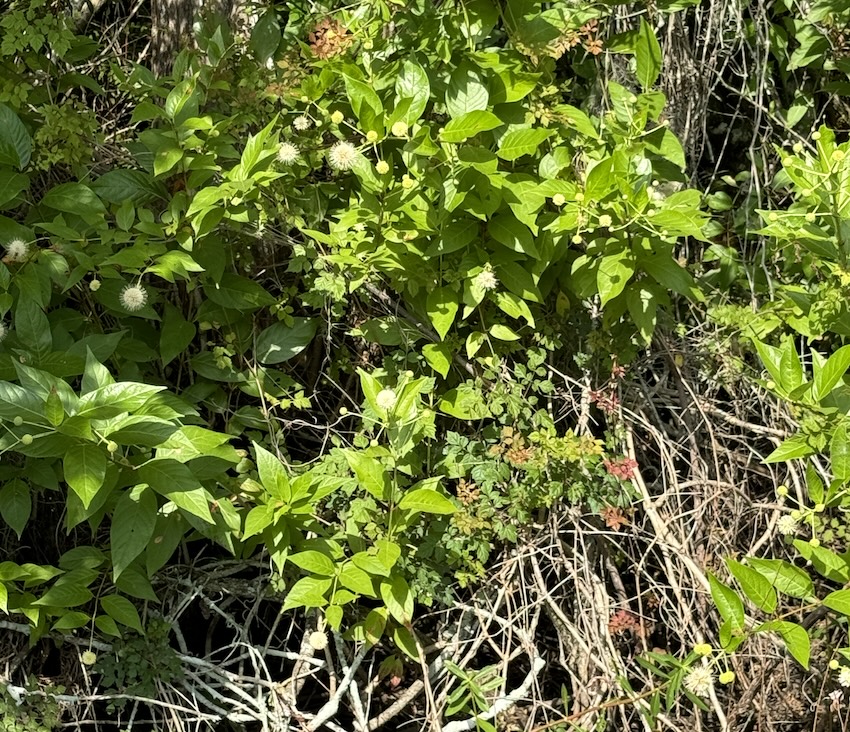
Cottonbutton (Cephalanthus occidentalis L.), 28°02’33.5″N 82°34’58.9″W, Westchase, Tampa, FL, USA, 05May2024.
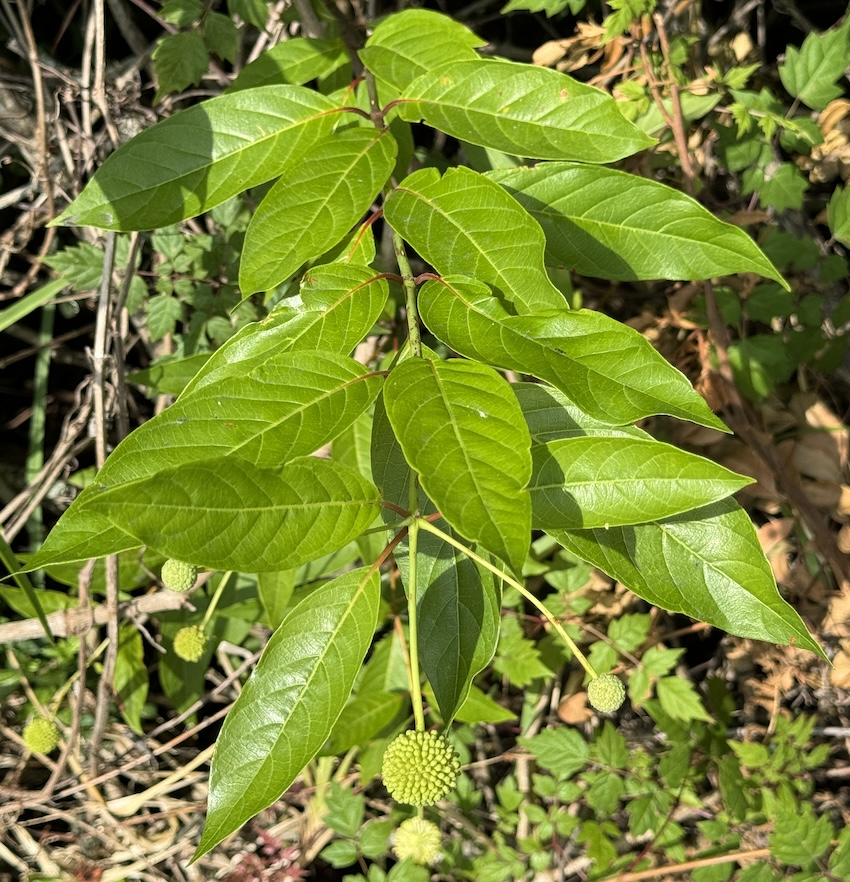
Cottonbutton (Cephalanthus occidentalis L.), 28°02’33.5″N 82°34’58.9″W, Westchase, Tampa, FL, USA, 05May2024. The leaves are simple and opposite, egg-shaped to oblong-elliptical, 6 to 15 cm long, 2.5 to 7 cm wide with a pointed tip, and rounded to tapered at the base. The upper surface is hairless, dark green and shiny, the lower surface is paler, sometimes with sparse hairs on the main veins. The edges are toothless and may be fringed with tiny hairs. The leaf petiole is hairless and up to 2 cm long, reddish.
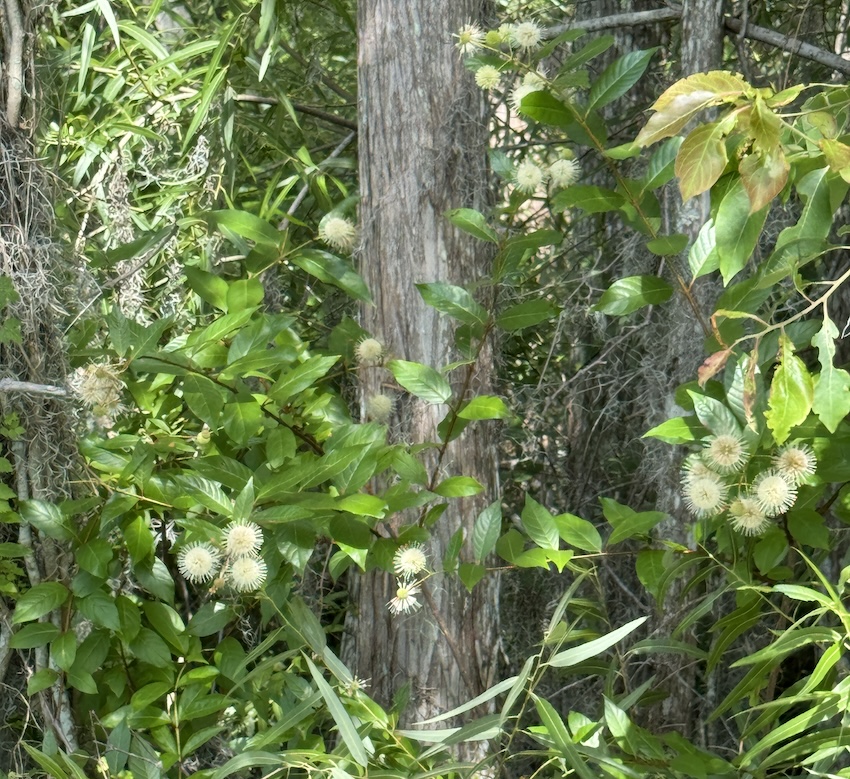
Cottonbud (Cephalanthus occidentalis L.), 28°02’33.5″N 82°34’58.9″W, Westchase, Tampa, FL, USA, 05May2024, with white spherical inflorescences.
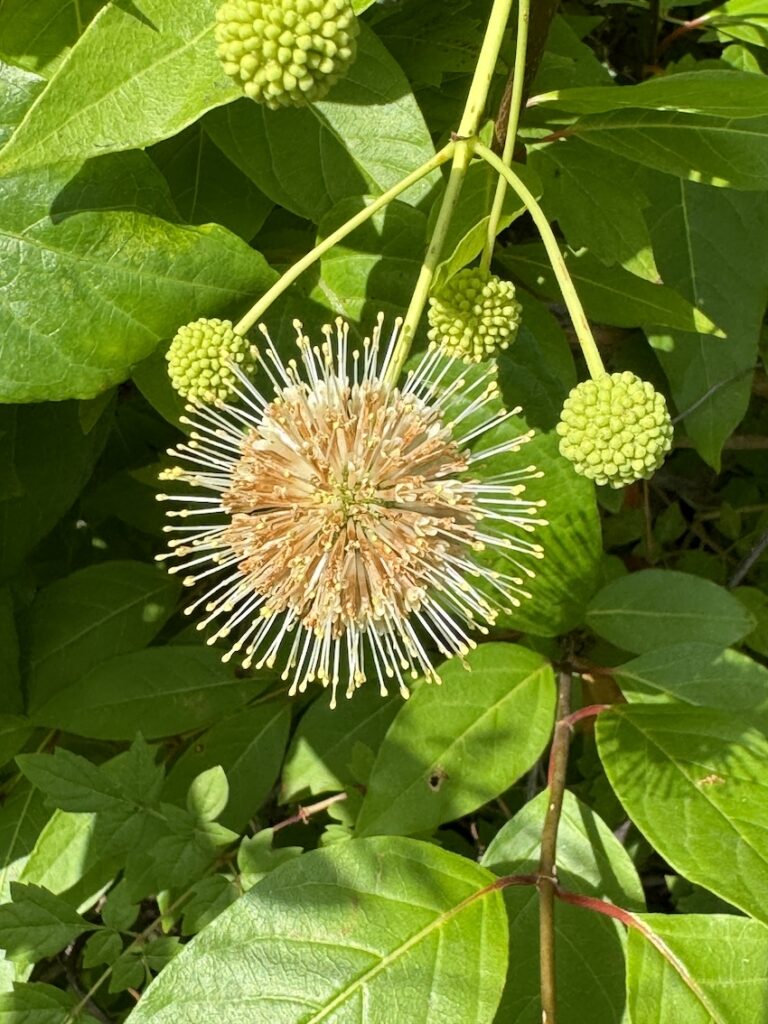
Matured inflorescence of cotton bud (Cephalanthus occidentalis L.), 28°02’33.5″N 82°34’58.9″W, Westchase, Tampa, FL, USA, 05May2024.
Literature
- Lady Bird Johnson Wildflower Center – the university of Texas at Austin. Available in: <https://www.wildflower.org/plants/result.php?id_plant=ceoc2>. Accessed on: May 4th. 2024.
- Minnesota wildflowers. Cephalanthus occidentalis (Buttonbush). Available in: <https://www.minnesotawildflowers.info/shrub/buttonbush>. Acesso em: 4 maio 2024.
- Romero, M. F.; Salas, R. M.; Gonzalez, A. M. Lectotypification, geographic distribution and conservation status of Cephalanthus glabratus (Naucleeae-Rubiaceae). Rodriguésia, v. 72, p. e01452019, 11 jun. 2021.
- USDA. Natural Resources Conservation Service. Common buttonbush, Cephalanthus occidentalis L. 2002. Plant Fact Sheet. Source: https://plants.usda.gov/DocumentLibrary/factsheet/pdf/fs_ceoc2.pdf. Accessed on: May 4th. 2024.



